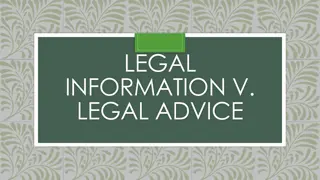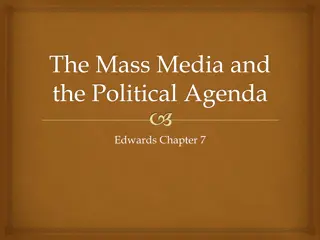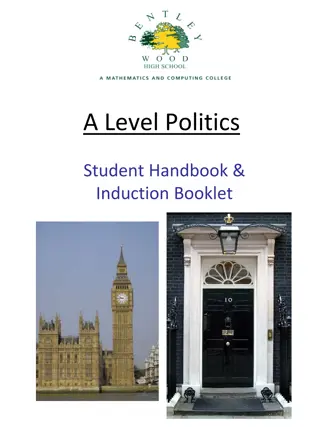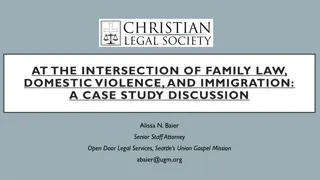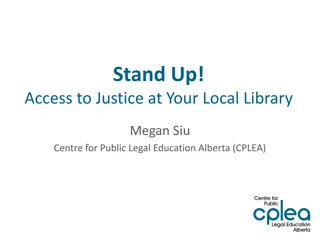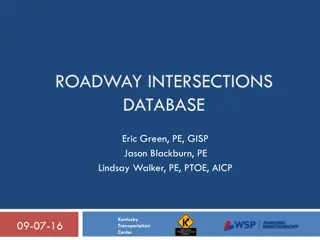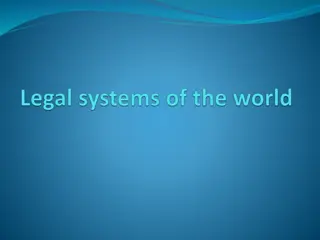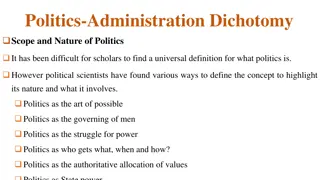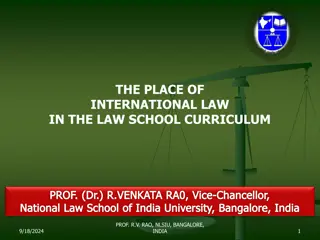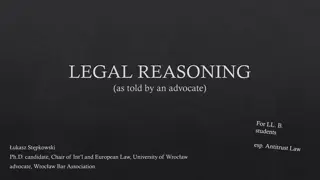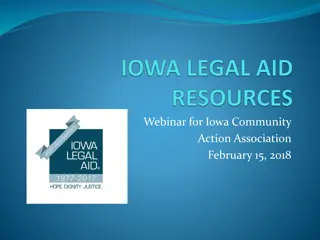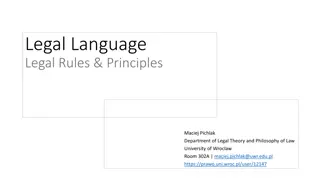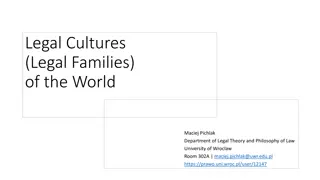Legal Components of Comprehensive Planning: Navigating the Intersection of Law and Politics
Explore the intricate relationship between law and politics in comprehensive planning, understanding the essential legal requirements and the political nature of implementation. Discover how comprehensive planning serves as a political act with legal dimensions that govern the development process.
Download Presentation

Please find below an Image/Link to download the presentation.
The content on the website is provided AS IS for your information and personal use only. It may not be sold, licensed, or shared on other websites without obtaining consent from the author. Download presentation by click this link. If you encounter any issues during the download, it is possible that the publisher has removed the file from their server.
E N D
Presentation Transcript
Meeting the Letter and Spirit of the Law: Legal Components of Comprehensive Plans
The Legal Connection Between Comprehensive Plans and the Pennsylvania Municipalities Planning Code
All associations are formed with the aim of achieving some good. The Greek city-state, or polis, is the most general association in the Greek world, containing all other associations, such as families and trade associations. As such, the city-state must aim at achieving the highest good. Aristotle concludes that man is a political animal : we can only achieve the good life by living as citizens in a state.
The life of the law has not been logic; it has been experience.
So if all that is true how can land use law operate separate from politics?
Comprehensive Planning is most certainly a political act.
And the implementation even more so with the adoption of ordinances, and the review of plans and the consideration of amendments.
But there are requirements of the law that apply to comprehensive planning.
Pennsylvania [municipalities] are creations of the state with no powers of their own, except those powers expressly granted to them by the Constitution of the Commonwealth or by the General Assembly, and other authority implicitly necessary to carry into effect those express powers.
The governing body is not bound by the comprehensive plan.
These legal requirements are found in the PA.M.P.C. and the case law that interprets and applies to the MPC.
It is the intent, purpose and scope of this act to protect and promote safety, health and morals;
To accomplish coordinated development;
To provide for the general welfare by guiding and protecting amenity, convenience, future governmental, economic, practical, and social and cultural facilities, development and growth, as well as the improvement of governmental processes and functions;
To guide uses of land and structures, type and location of streets, public grounds and other facilities;
To promote the conservation of energy through the use of planning practices and to promote the effective utilization of renewable resources;
To promote the preservation of this Commonwealth s natural and historic resources and prime agricultural land;
To encourage municipalities to adopt municipal or joint municipal comprehensive plans generally consistent with the county comprehensive plan;
To promote small business development and foster a business- friendly environment in this Commonwealth;
To ensure that municipalities adopt zoning ordinances which are generally consistent with the municipality's comprehensive plan;
To encourage the preservation of prime agricultural land and natural and historic resources through easements, transfer of development rights and rezoning;
To ensure that municipalities enact zoning ordinances that facilitate the present and future economic viability of existing agricultural operations in this Commonwealth and do not prevent or impede the owner or operator s need to change or expand their operations in the future in order to remain viable;
To encourage the revitalization of established urban centers;
And to permit municipalities to minimize such problems as may presently exist or which may be foreseen and whenever the provisions of this act promote, encourage, require or authorize governing bodies to protect, preserve, or conserve open land, consisting of natural resources, forests and woodlands any action taken to protect, preserve or conserve such land shall not be for the purposes of precluding access for forestry.
Subsection (a) Theplan, consisting of maps, charts and textual matter, shall include , but not be limited to, the following related basic elements.
1. 2. 3. 4. A plan for land use A plan for housing needs A traffic plan A plan for community facilities and utilities
A estimate of environmental, energy conservation, fiscal, economic development and social consequences from the interrelationship of these plan components. Statement of short and long term implementation strategies. Statement of compatibility of existing with proposed development. 1. 2. 3.
A plan for protection of natural and historic resources to the extent not preempted by Federal or State law .The plan shall be consistent with and may not exceed those requirements imposed under the following: Lists 9 Commonwealth statutes.
The Surface Mining Conservation and Reclamation Act: 52 P.S. 1396.1
The Bituminous Mine Subsidence and Land Conservation Act: 52 P.S. 1406.1
The Non-Coal Surface Mining Conservation Act: 52 P.S. 3301-3326
An Act Protecting Agricultural Operations from Nuisance Suits and Ordinances Under Certain Circumstances: 3 P.S. 951
The Nutrient Management Act: 3 Pa. C.S. 501-522
A historical whos who of Pennsylvania business interests. Agriculture, coal, oil and gas. Surprised the railroad isn t mentioned.
Shall Should May May Not
Section 301 (a) provides the list of the things a comprehensive plan shall include. Section 301 (c) every ten years the governing body should consider whether changes to the plan are necessary. Section 301(a) the plan need not be limited to the required parts.
Cannot impede need to change or expand Ag uses in the future. Cannot preclude access for forestry. Limited in protection of resources by federal and Commonwealth preemption. Restricted by terms of 9 Commonwealth laws.
After the comprehensive plan is adopted then certain proposal must be sent to the planning agency/commission for review and comment.
Proposals re: streets, public grounds, pierheads and watercourses. Proposals re: public structures. Proposed ordinances or amendments Proposals re: water or sewer lines or treatment facilities.
Within 45 days the planning agency must respond with its comments on whether the proposal is in accord with the objectives of the adopted comprehensive plan.




